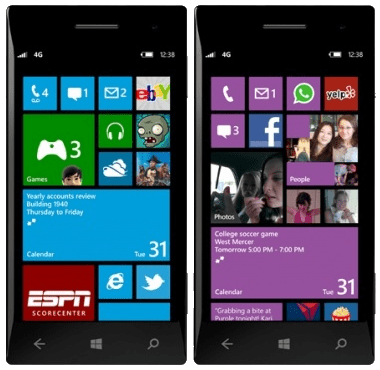Now its the turn for Windows Phone 8

It was Apple to unveil the iOS 6, the upcoming Operating System for the Apple’s mobile devices. And the announcement of Google to launch Android 5, but changed the version from 5 to 4.1 code-named “Jelly Bean”. And to compete in the market Microsoft has come up with Windows Phone 8.
Code-named “Apollo”, Windows Phone 8 brings the platform in line with other mobile OSes by adding support for muti-core processors, higher screen resolutions and newer wireless technologies like near field communication (NFC).
Importantly, Microsoft has re-coded Windows Phone from the ground up for the new version. Previous versions of Windows Phone were based on Microsoft’s old mobile OS, Windows CE, but now the platform will share the same source code as the company’s coming desktop OS, Windows 8.
That has big consequences for developers and consumers. For developers, it will be extremely easy to create a Windows Phone app if they already have a Windows 8 app that runs in the Metro environment (and vice versa). For consumers, it means more apps and better hardware to run them.
It also has the effect of rendering every current Windows Phone obsolete, since those phones won’t be able to run the new software. They will, however, get an upgrade to Windows Phone 7.8.
Windows Phone 8 adds support for many new hardware features. The most anticipated is support for multi-core devices, which have become common on both Android and iOS platforms. There’s also support for better screen resolutions, including 720p and 1,280 x 768 (WXGA). That’s not quite retina, but it’s better than the 800 x 480 screen of the Nokia Lumia 900, one of the current leading Windows Phones.
On top of that, the new Windows Phones include support for external storage in the form of microSD cards as well as NFC.
NFC support opens the door for mobile payments, of course, and Microsoft is way ahead of you. The company says it’s created the “most complete” mobile wallet solution, working directly with carrier partners to implement it. In the U.S., that means working with ISIS, a mobile-payments collaboration between Verizon, AT&T and T-Mobile, though Microsoft says consumers won’t see the fruits of that partnership until next year.
Windows Phone 8 puts Nokia Maps front and center, removing the redundancy between that service and Microsoft’s own Bing Maps service. It will support offline viewing of maps.
In the biggest cosmetic change, the dynamic “live tiles” on the home screen in Windows Phone 8 have been given an extreme makeover. They’re now much more customizable, giving users many more options for colors and sizes. The idea is you can tailor your home screen in much more detail — for example, if you’re a sports nut, you can decorate it with sports apps that update on the fly with scores and photos.
Microsoft also has much more to offer IT departments with Windows Phone 8. The new OS supports encryption, secure boot and device management, and it includes mobile versions of Microsoft’s popular Office apps.
Source: Mashable.

